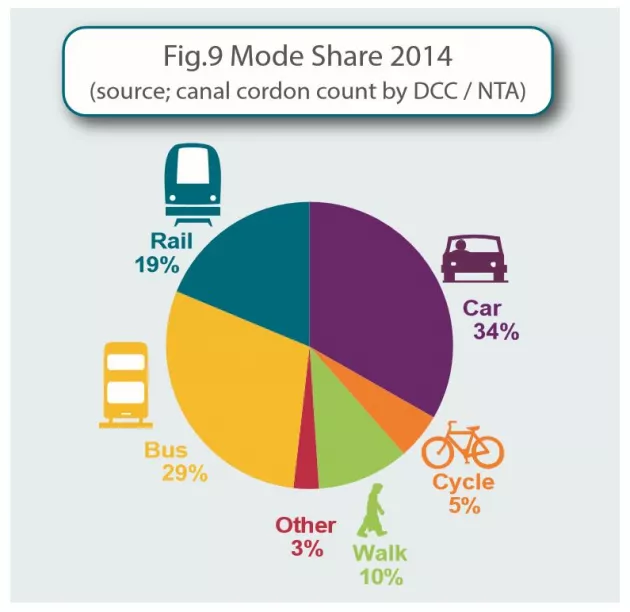8.2 Achievements
8.2 Achievements
The onset of recession limited the range of major projects completed during the past development plan period. This said, the construction of the Luas light rail crosscity route from St Stephen’s Green to Broadstone is now progressing well, and this will form an important integrating link in the current public transport system when complete in 2017. The Rosie Hackett public transport bridge over the River Liffey has been completed and this facilitates the new Luas route, pedestrians and cyclists. More generally, there has been increased emphasis on improving the environment for cyclists and pedestrians and Dublin City Council adopted a Public Realm Strategy in 2012. Titled ‘Your City – Your Space’, this identifies priority projects and actions.
See: Your_City_Your_Space_Public_Realm.pdf (dublincity.ie)
The successful Dublin shared bike scheme continues to be expanded and the canal premier cycle route from Portobello to Spencer Dock is well used.
At a strategic level, new local area plans have been developed around sustainability principles and promote active travel and public transport use (e.g. Ashtown/ Pelletstown and Clongriffin/Belmayne LAPs). Strategic development zones adopted for Grangegorman and Grand Canal Dock and North Lotts are similarly focused.
Other infrastructural works have included necessary upgrades of roads and bridges, and the re-alignment of Ratoath Road and replacement of Reilly’s Bridge near Pelletstown have greatly reduced congestion in the area. Other works are ongoing, including an upgrade to Newcomen Bridge along the North Strand and improvements to Blackhorse Avenue adjoining the Phoenix Park.
Changing the mode share of commuters towards sustainable options is a key requirement, and during the period 2006 – 2014, use of the private car decreased by 17% and the proportion of cyclists entering the city increased by 114%. Incremental improvements to strategic cycleways have much improved the cycling environment and further enhancements are planned. The walking share target of 10% was exceeded over the period of the last development plan.
Pro-active traffic management is an ongoing requirement, and Dublin City Council has sought to limit the growth of peak hour traffic within the canal cordon. The continued implementation of the HGV Management Strategy (2007) has ensured controlled access to the city centre for large HGVs, providing a safer environment for pedestrians and cyclists. Electric vehicles are more sustainable to run than conventional vehicles and electric charging points have been provided throughout the city. Further, new by-laws have been introduced by Dublin City Council to facilitate the operation and expansion of car clubs within the city.
A collaborative approach has been developed to promote sustainable travel in conjunction with communities and businesses. This began in Drimnagh with the ‘Hike It! Bike It! Like It! Drimnagh’ project (formerly Drimnagh Smarter Travel), and has been since expanded to other areas of the city. The project was a finalist in both the 2013 National Green Awards and in the Excellence in Local Government Awards. A partnership with An Taisce’s ‘Green Schools’ programme helps Dublin City Council promote walking and cycling in over 250 schools in the city area.
